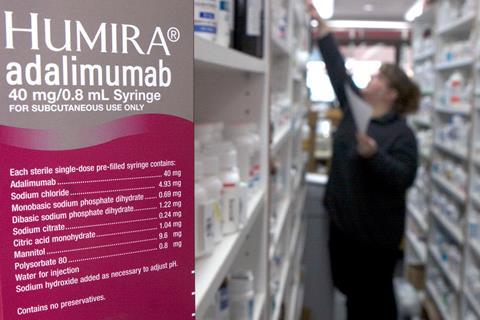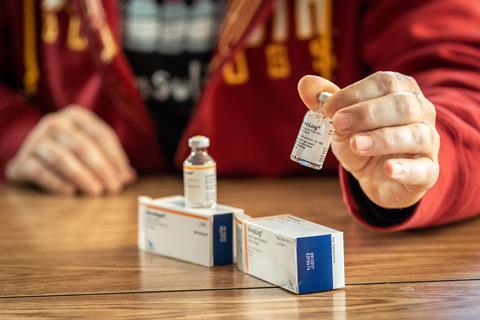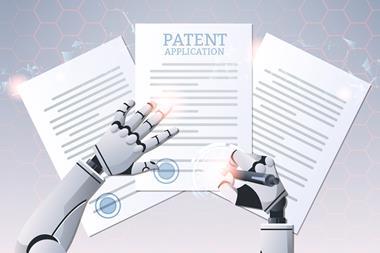What are ‘evergreening’ and ‘thicketing’ and what is being done to reform the system and aid competition?
At the end of 2023, the US Federal Trade Commission (FTC) challenged several pharmaceutical companies (including AbbVie, AstraZeneca and Teva) on the accuracy or relevance of over 100 patents listed in the US Food and Drug Administration’s (FDA’s) Orange Book – a registry for patents relating to approved drugs, which have bearing on the possible market entry of lower priced generics.
In May 2024 the FTC expanded that investigation to include another 300+ ‘junk listings’ from eight companies, claiming that the patents could be used to improperly delay competition and maintain high drug prices.

In response, GSK, Amneal’s Impax Laboratories and Kaleo delisted some patents relating to asthma inhalers and adrenaline injector pens. But the remaining companies stood by their listings. In June, a federal judge in New Jersey ruled that five of Teva’s patents on the metered dose inhaler for its asthma medication ProAir HFA were improperly listed, ordering the company to correct or delete the listings. According to the Washington Post, the FTC has also launched a formal investigation into Teva’s refusal to rescind over 20 of its inhaler patent listings.
In recent years, pharmaceutical companies have become increasingly adept at exploiting the patent system in various ways, to delay competition from generic drug developers and extend their pricing monopolies. But what techniques are companies using and what is being done to crack down on them and reform the patent system?
What are patents for?
The patent system is designed to reward innovation by protecting patent holders from competition for a set amount of time (20 years from filing in the US). Applications are typically filed during the early research phases of a drug molecule or innovation, which can be up to a decade before the product goes to market. Once a patent over a drug expires, prices tend to drop by around 30-50%.
Pharmaceutical companies mainly protect their products with a primary patent covering the active compound. However, increasingly companies are seeking additional patents based on changes made to the original drug – such as its manufacturing process, formulation or mode of administration – to protect their market position. These secondary patents confer additional years of exclusivity.
‘You can think of patents and related protections as a wall. Some of those protections make the wall longer, which means that your potential monopoly lasts longer,’ explains Robin Feldman, a professor of law and expert on patent law, intellectual property and drug pricing. ‘Some of the protections make the wall taller so it’s just harder to climb over.’
What strategies are pharmaceutical companies using to manipulate the patent system?
There are a whole range of possible strategies companies can exploit to delay generic medicines coming onto the market.
‘The most popular approach is to make minor modifications to the drug’s formulation, dosage system, or delivery system and obtain new patents or protections for that,’ explains Feldman.
In some cases, these tweaks make no difference to the safety or efficacy of the drug, although some might improve convenience for some patients and others might be even more helpful – such as by making it possible to treat other conditions with the same drug.
A study published in PLOS Medicine in November 2023, which examined how manufacturers have used patents and regulatory exclusivities on insulin products, found that patents on the devices that deliver the medication had been a key factor driving prolonged extension of market protection for these products.
This practice of serially extending exclusivity on existing drugs been termed patent evergreening. Another common tactic, used in pharmaceuticals but also in other sectors such as nanotechnology, is ‘patent thicketing’. This is when a company amasses dozens of overlapping patents – primary and secondary – creating an interlocking wall of intellectual property protection around a product and preventing competition for years or even decades.
One of the first documented cases of these strategies was when AbbVie surrounded its anti-inflammatory antibody Humira (adalimumab) with a fortress of more than 130 patents, maintaining market exclusivity from the drug’s launch in 2002 until 2023. Amgen has employed similar techniques with its arthritis drug, Enbrel (etanercept), which will likely have a total of 37 years of patent protection through to 2029.
How long are patents being extended for?
The same PLOS Medicine study found that manufacturers secured a median of 16 years of protection on their insulin products from their launch on the market – with a median extension of six years beyond the primary patent.

The insulin product line with the longest periods of expected protection from the first product approval to last patent expiry was Sanofi’s Lantus (insulin glargine, 32.9 years), followed by Novo Nordisk’s Novolog (insulin aspart, 32.3 years) and Novolog 70/30 (insulin aspart protamine and insulin aspart, 30.9 years).
Biological drugs like insulin and antibodies are more complex to manufacture and deliver. Hence, as Feldman points out, ‘the ability to put up protection barriers in the biologic industry is much greater than with non-biologic drugs, and companies are able to obtain longer periods of protection.’
What can be done?
Any patent can be challenged in court, on a variety of grounds. But generic drugmakers looking to shorten the time they must wait before introducing versions of a drug are generally more successful when challenging secondary patents. However, the process is risky and can take years.
Feldman believes that a better approach would be the introduction of a ‘one and done’ system. ‘The basic notion is that there should be one period of protection for a new molecule that everyone knows and that’s it. After that, competitors can come into the market,’ she explains. This would preserve an exclusivity reward for innovation, but reduce misuse of extensions.
To be patentable under law various elements are required of an innovation, for example, it must be useful and novel. The inventor must also demonstrate that the invention would not have been obvious to a ‘person of ordinary skill in the art’. Feldman says another route to quelling evergreening would be to strengthen the application of this obviousness doctrine in patent law.
‘Many of these patents should be obvious to those skilled in the art and should not receive the protections they are getting,’ she adds.
How widespread is the issue and how long have we been aware of it?
Research suggests that patent engineering is prevalent throughout the pharmaceutical industry and is particularly pronounced among manufacturers of the best-selling drugs.
‘Evergreening is business as usual in the pharmaceutical industry,’ Feldman says. ‘Much of evergreening has happened since the turn of the millennium, and it has increased substantially across time.’
A 2018 paper by Feldman found that, of the 100 best-selling drugs, more than 70% had their protection extended at least once, and almost half extended more than once. Once companies begin to exploit this strategy, there is a tendency for them to keep returning to it. The same study found that 80% of those who added protections, added more than one.
Feldman refers to the Hatch-Waxman Act, formally known as the Drug Price Competition and Patent Term Restoration Act of 1984, which provided a pathway for rapid entry of generic competitors. Consequently, generic competition blossomed in the US and brought pharmaceutical prices down considerably. While patented drugs are generally more expensive in the US than elsewhere, US generics are some of the cheapest.
‘The pharmaceutical industry, over time, has responded to that challenge – and evergreening is a key response,’ she adds. She also says the practice could have been further pushed forward by ever growing drug prices, for example when Gilead’s new treatment for hepatitis C, Sovaldi (sofosbuvir) was listed at $84,000 to treat a single patient.
‘They broke through a psychological barrier of what one could charge for drugs,’ says Feldman. ‘Once that barrier had been broken, then you saw companies just expanding with new eye-popping prices.’
What is the impact of patent misuse?
Healthcare costs, including prescription drugs prices, already create a significant barrier to the economic wellbeing of patients, particularly in the US. By restricting the arrival of cheaper, generic alternatives on the market, patent extensions ensure prices remain high and can be the deciding factor in whether a patient can afford their medicine or not.
‘We see more new drugs emerging [but] they’re helping fewer patients, the cost to patients is staggering and many of them are adjustments which are evergreening an existing molecule,’ says Feldman.
What is being done to reform the patent system?
The FTC’s investigations and enforcement actions are ongoing, and could result in some patent protections being removed and opening the way for generic competition on those products, but addressing the wider issue will likely require more extensive rule changes.
In early December 2023, the Biden-Harris administration announced new action to lower health care and prescription drug costs by promoting competition including stopping ‘Big Pharma tactics’ that raise the prices of medicines for working families. It said the FDA and US Patent and Trademark Office were working together on a robust set of initiatives aimed at protecting and promoting innovation while advancing marketplace competition that can lower drug prices and expand access.
Drug pricing in the US is complex, and not always limited by patent protections. With increased government scrutiny on asthma inhalers (some of which relates to Orange Book patent listings, but some to other practices), for example, Boehringer Ingelheim, AstraZeneca and GSK all committed in March to capping their inhalers’ monthly out-of-pocket costs to US patients at $35 (£30).
The European Commission also has patent misuse practices on its radar and has adopted a number of individual decisions against pharmaceutical companies for delaying the market entry of generic medicines. In 2020, for example, the Commission fined Teva and Cephalon a total of €60.5 million for agreeing to delay the market entry of a cheaper generic version of Cephalon’s drug for sleep disorders, modafinil, for several years.

















No comments yet